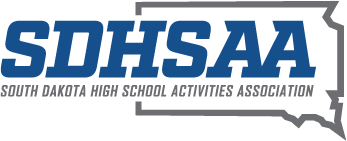(South Dakota News Watch) The confirmed finding last summer of zebra mussels in Pactola Reservoir – 15 miles west of Rapid City in the Black Hills National Forest – has sparked greater scrutiny of South Dakota’s efforts to protect bodies of water from aquatic invasive species, which spread exponentially and can negatively impact ecosystems, water intakes, fisheries and beaches.
Zebra mussels, snail-like mollusks that reproduce rapidly and move from lake to lake by attaching to boats or microscopically in ballast tanks and live wells, were first discovered in South Dakota at Lewis and Clark Reservoir in 2015 and have now infested 12 bodies of water, including Lake Sharpe and Lake Francis Case on the Missouri River.
That high speed of spread has led advocacy groups and some state legislators to call for more aggressive mitigation from the South Dakota Game, Fish & Parks Department and Gov. Kristi Noem. The governor signed a law in 2020 to broaden GFP enforcement authority regarding invasive species but has been largely quiet on the issue the past two legislative sessions.
Now, western neighboring states such as Wyoming and Montana are sounding the alarm on aquatic invasive species (AIS) and calling out South Dakota’s relative lack of resources and staffing to carry out boat inspections, decontamination, water testing and other preventative methods. Some worry that South Dakota has been too slow to contain the spread of adult zebra mussels and juveniles known as veligers, free-swimming larvae that can spread through water currents. Female zebra mussels can release as many as 1 million eggs per year, according to the U.S. Fish and Wildlife Service.
“We have a new threat right on our doorstep,” Josh Leonard, the Wyoming AIS coordinator, told News Watch. “Before Pactola was infested, the closest zebra mussel population was the Missouri River area. Being 27 miles away from our border versus a couple hundred miles away has heightened the threat to our state. If South Dakota was able to do more at Pactola, we might not have to be doing as much here.”
Alan Osterland, Wyoming chief of fisheries, was even more direct when addressing the Wyoming Game and Fish Commission this past September. “The [South Dakota] response, in our opinion, has been hands off,” he said.
The South Dakota AIS program budget for 2021 was $538,000, which includes federal grant money through the U.S. Fish and Wildlife Service and the Bureau of Reclamation, which oversees dams, power plants and canals in the western states. Wyoming has an annual AIS budget of $1.3 million, paid for partly by fees for AIS decals, which cost $10 for motorized watercraft registered in Wyoming and $30 for motorized watercraft registered in other states.
Montana has invested about $5 million a year to fund water sampling and boat check stations to protect the state’s lakes and reservoirs from infestation. The state plans to adjust inspection station operations in 2022 “to address boat traffic from the Black Hills” now that zebra mussels have migrated west in South Dakota.
Minnesota, which first observed zebra mussels in 1989 in the Duluth/Superior harbor, spends about $10 million each year on AIS prevention and containment efforts, with the money disbursed to counties to formulate their own strategies.
South Dakota doesn’t have a dedicated state funding source for its AIS program, relying on federal grants and partnerships with community groups, in addition to coordinating with state agencies such as the Department of Transportation and the Department of Public Safety.
GFP Secretary Kevin Robling and AIS Coordinator Tanner Davis have enacted a strategy of public outreach and education, using signage and marketing to convey a message of “Clean, Drain, Dry” to recreational boaters. That slogan refers to cleaning off boats and trailers, draining live wells and bait buckets and drying off boats and trailers before reintroducing them to a body of water to prevent the spread of zebra mussels.
The GFP strategic management plan notes that there are nearly 10,000 waterbodies and roughly 500 boat ramps statewide and the “geographic size and complexity of South Dakota’s aquatic resources make containment efforts challenging.” Davis told the GFP Commission on Dec. 9 that the department saw 96% plug compliance in 2022 and that the goal is to educate the other 4% and use enforcement measures when needed.
Legislators, lobbyists criticize lack of urgency
South Dakota GFP officials note the difficulty of finding enough seasonal employees and college interns to fill AIS boat inspection positions throughout the state. South Dakota conducted 18,500 inspections in 2022, far fewer than Minnesota (540,000), Montana (90,000) and Wyoming (65,000), but more than Nebraska (6,600) and North Dakota (5,000).
When asked by legislators during a Government Operations and Audit Committee meeting in October 2022 whether GFP would benefit from more stringent laws or more state funding for AIS programs, Robling replied that things are “working quite well” and that his department is “adamantly trying to slow the spread of aquatic invasive species” with public messaging.
“We feel that we have the necessary statutes in place at this time, so the answer to your question would be no,” said Robling, who became Secretary of GFP in December 2020. “We feel like we have the financial resources and staffing, once we fill those positions that we are hoping to fill. Right now, though, the workforce issue is a challenge, no question about it.”
Robling’s summary didn’t sit well with Sen. Reynold Nesiba, D-Sioux Falls, a member of GOAC and the Senate Appropriations Committee, who wants to see more done to prevent zebra mussels from harming South Dakota waters and infrastructure such as intakes and irrigation systems.
Nesiba said containment is crucial while scientific research is done to determine if impacted lakes can be treated to reduce the ecological impact of zebra mussels and other invasive species such as Eurasian water milfoil, curly leaf pondweed and starry stonewort. Early detection is a top priority in Montana, which uses techniques such as eDNA testing to pick up an organism’s cellular traces in the water column.
“I think there is a sense from Game, Fish and Parks that resistance is futile, and I think they’re wrong about that,” Nesiba told News Watch. “They aren’t communicating with community groups that care deeply about this issue and they’re doing far less than other states. What’s missing is the political will and leadership to see this as a problem that can be mitigated, and I remain hopeful that the governor is going to step up and do more about this.”
South Dakota has so far resisted calls for an economic impact study to determine potential costs to the state if the proliferation worsens, as expected. The fact that the Pactola Reservoir is instrumental for irrigation purposes and for providing water for municipal and industrial users in Rapid City is the newest cause for concern about potential future costs. Zebra mussels can choke off water pipelines and foul irrigation channels, leading to major maintenance costs.
The Minnesota Invasive Species Council released a report in 2019 that estimated an annual economic cost of $230 million in mitigation expenses and lost revenue if zebra mussels were to infest the state’s lakes, a number that was viewed as conservative because it only considered the cost to affected stakeholders and not general state resources.
Gov. Noem did not respond to questions sent by News Watch about her stance on the AIS issue and she has declined meeting requests from the citizen-led South Dakota Lakes and Streams Association, of which former Republican state senator Deb Soholt of Sioux Falls is a board member.
Soholt believes the governor’s recent inattention to the issue is indicative of a state government response that fails to weigh the potential impact of invasive species on tourism, outdoor recreation, water quality, irrigation and lake and river ecosystems.
“I would hate for her legacy to be the governor who lost control of South Dakota waters under her watch,” said Soholt.
Zebra mussel invasion ‘absolutely heartbreaking’
Dave Charron has spent much of his life on the water, running a used and new boat dealership in Webster and a marine storage business with locations on Lake Pickerel, Clear Lake and Mina Lake in northeastern South Dakota. He also owns a cabin on Enemy Swim Lake.
Charron has seen several of those Day County lakes infested by zebra mussels in the past few years, causing a loss of recreational opportunities and harm to beaches and shorelines due to sharp-edged shells. The mussels first appeared in the United States in the Great Lakes in the 1980s, carried by ballast water discharged by large ships from Europe. Their introduction to northeast South Dakota became evident when property owners and boaters started seeing clusters of dark, zig-zagged striped shells attached to boat lifts and docks.
“When I saw zebra mussels at Pickerel for the first time, it was absolutely heartbreaking,” said Charron, who sold Dave’s Marine in 2020 but still runs his storage business. “The more I learned about invasive species and what they can do to our lakes, the scarier it got, and it continues to get worse as I learn more about it.”
That sense of urgency kept him moving. He joined a group of concerned residents to form the Enemy Swim Preservation Association in March 2021, using private funds and volunteers to assist GFP with inspections around Enemy Swim, located a few miles from Pickerel.
Despite those efforts, Enemy Swim was declared infested by zebra mussels in July 2022. By that time, Charron had teamed with retired financial executive Dan Loveland, who owns a cabin on Pickerel Lake, and Soholt, a seasonal resident of Clear Lake, to retool the South Dakota Lakes and Streams Association, a mostly dormant nonprofit at the time. The group, which now represents 11 lakes, aims to assist with mitigation efforts and explore research about the impact of AIS, including possible scientific breakthroughs.
Board members met with researchers from the University of Minnesota Aquatic Invasive Species Research Center, who detailed how zebra mussels filter out algae that makes water clearer in the short term but can lead to higher water temperatures, dense plant growth and disrupted food chains. Zebra mussels consume beneficial organisms that serve as a food source for insects that would otherwise provide food for fish. University of Minnesota researchers found that first-year walleyes in infested lakes are 14% smaller than those in non-infested lakes.
“By all accounts, there are methods that have shown effectiveness in mitigating the effects for municipal water users and intake pipes getting clogged,” said Loveland, president of South Dakota Lakes and Streams. “In terms of eradicating zebra mussels on Pickerel Lake, that’s way down the road. But we need to be more aggressive in spending some money now to try to stop the spread.”
That intent to stop the spread differs from the GFP “slow the spread” mantra – a point of contention that sums up contrasting perspectives as South Dakota Lakes and Streams attempts to put pressure on the state executive branch to act with urgency and funnel more resources toward research, prevention and enforcement.
“If you want people to stop doing something, say stop,” said Charron, who has communicated with fisheries officials in neighboring states. “Don’t say slow. Slow just means somebody else.”
Shifting strategies on AIS enforcement
The 2020 state legislature took serious action after zebra mussels were discovered on Lake Sharpe, on the Missouri River between Pierre and Fort Thompson, in the summer of 2019. The tone was set from the governor’s office, with Noem filming a public service announcement reminding boaters to pull their plugs and follow the “clean, drain, dry” rules set forth by Game, Fish and Parks.
“We must all recognize the role that we play in stopping the spread of these mussels,” Noem said in the August 2019 video. “If you use South Dakota’s lakes and rivers in any way, you need to care about the devastating impact of invasive species like zebra mussels.”
Noem later signed into law House Bill 1033, which declared an emergency and gave GFP authority to establish inspection and decontamination stations while creating “repercussions for transporting invasive species.” Any person possessing, importing or transporting aquatic invasive species faces a Class 2 misdemeanor, while the fine for a boater not pulling the drain plug after leaving the water is $182.50.
Implementation of the 2020 law was hindered by the arrival of the COVID-19 pandemic that March as well as the resignation of AIS Coordinator Mike Greiner, later replaced by Davis, a western South Dakota fisheries specialist. Robling, a South Dakota State University graduate who joined the department in 2011, took over the GFP reins at the end of the year from Kelly Hepler, who was appointed in 2015 by then-Gov. Dennis Daugaard.
As the number of infested lakes in the northeast part of the state increased, GFP shifted its focus to protecting western reservoirs such as Pactola, Angostura, Sheridan and Belle Fourche, with fisheries official John Lott telling the GFP Commission in October 2020 that “the horse is out of the barn” when it came to controlling the spread in central and eastern South Dakota.
To Soholt, who served as a Republican state senator for eight years, it seemed like all the momentum from the passage of HB 1033 had been lost, with no clear reason why.
“The frustrating part is the disconnect between what happened (at the legislative session) in 2020 and now,” said Soholt. “What changed? The state sort of backpedaled to, ‘We can’t do anything about it. It’s going to spread no matter what.’ But the comprehensive programming is not there. Listen, I’m a Republican. I don’t want to throw millions of dollars down an unfulfilling rat hole, but when we look at how all these other states are fighting this, it’s disappointing.”
South Dakota Lakes and Streams worked behind the scenes in Pierre in 2022 to develop legislation that became Senate Concurrent Resolution 602, setting a deadline of Aug. 1, 2022, for the executive branch to provide a “detailed prescription of upgrade efforts to curtail the spread of aquatic invasive species.”
When the deadline arrived, GFP had updated data from its management plan, but the lack of detail about “upgrade efforts” drew the attention of the Government Operations and Audit Committee, which submitted questions – mostly formulated by South Dakota Lakes and Streams – to be answered at the GOAC meeting in Pierre in October.
Robling and Davis appeared the first day and presented a power-point summary of the management plan rather than specific answers to the submitted questions. The answers were provided in written form after the Oct. 18 meeting, which led to a rebuke by some of the lawmakers, including Rep. Randy Gross, R-Eklton, the committee chairman who called upon GFP to return the next day but noted legislators wouldn’t have much time to review the responses.
Davis was there the next day, but Robling was not. Director of Wildlife Tom Kirschenmann attended the meeting and reiterated the department’s “clean, drain, dry” public communication strategy while stressing the importance of public/private partnerships to address the issue.
Sen. David Wheeler, R-Huron, joined some legislators in advocating for an economic impact study or cost-benefit analysis to better measure the scope of the AIS problem. Others pointed to the futility of stopping the spread of zebra mussels, comparing such efforts to “trying to stop the sun from rising.”
“I think there needs to be more numbers provided to justify the department’s position and be comfortable that we’re using a good approach,” Wheeler said at the GOAC meeting. “It’s important that people get a sense of what the potential damage is. Is it 50 million dollars? Is it 250 million? That would be helpful to know.”
Wyoming intensifies fight against zebra mussels
Pam Bogart served as a federal postmaster in Wyoming for 30 years before moving to Hot Springs, S.D., in 2019 to be closer to family. An avid angler who loves exploring lakes and reservoirs in the Black Hills, Bogart became concerned enough about the infestation of zebra mussels to lend a hand at mitigation efforts.
Bogart worked 50 hours a week as an AIS inspector at Angostura Recreation Area in Hot Springs in the summer of 2021, giving her insight into the effort to prevent the spread of zebra mussels to the state’s western lakes and reservoirs, an effort she sees as lacking in urgency and scope.
“When I started my job, there were six infested bodies of water in South Dakota that they knew of,” said Bogart. “Fast forward to spring of 2022 and it was 10. With Pactola, that’s 11. That’s a huge increase. What we’ve done is pretty much a Band-Aid. It looked like we were doing something, but we really dropped the ball when it came to funding a successful operation.”
GFP increased the number of inspections at Angostura from 2,898 in 2021 to 3,928 in 2022, with federal money helping to pay for power washing and decontamination stations. Decontamination consists of a very hot water rinse and a high-pressure spray, which kills and removes zebra mussels from boats or water-based equipment.
The problem is that GFP uses seasonal employees and college interns as inspectors, paying about $15 an hour, and the department only managed to fill 31 of 53 positions statewide in 2022. There was also a shortage of law enforcement, the only personnel who can write tickets, which made it hard to create a deterrent effect that would spread by word of mouth among boaters. AIS-related citations have decreased from 299 in 2000 to 240 in 2021 to 63 in 2022.
“Angostura has three entrances, and if you leave one entrance open because you don’t have enough employees to work it, you might as well not have anybody out there at all,” said Bogart. “College interns get out of school in the spring and are done inspecting boats and are on their way back to college by the end of August. Unfortunately, zebra mussels don’t have calendars. When 80% of your workforce has to abandon its post, I don’t see how you can call that a credible effort.”
GFP officials have reached out to lake residents to try to find housing for seasonal employees while also working with South Dakota State University on job fairs and other outreach to fill positions for 2022. Nesiba noted that higher salaries could help solve the problem and urged Robling and his staff to ask for more money from the governor in the upcoming budget.
The Wyoming Game and Fish Department has noted these shortcomings and increased efforts to protect waters near the South Dakota border, hoping to serve as a fire wall for other western states. Wyoming requires all watercraft coming from another state to have an inspection before launching, and at Keyhole and Glendo state parks – popular destinations for boaters who visit Pactola – entry is limited to one boat ramp during set hours to ensure that inspections occur.
The practice is similar to regulations in states such as Colorado, where if no one is on hand to inspect boats, the gate is closed. Some states use spike strips or a chain across the launch.
Looking ahead to 2023, Wyoming will increase hourly pay for inspectors to $18.71 and maintain a presence at inspection stations from the beginning of March through November. Officials are also increasing seasonal staffing by 20% and adding two check stations near the South Dakota border to intercept traffic coming out of the Black Hills to Wyoming, trying to keep the state from experiencing its first infestation.
“Prevention is priority number one for us,” said Shields, the state AIS coordinator. “Once you get zebra mussels, containment is probably the best approach. But the thing to keep in mind is that once you get them in your state, you can’t really just walk away from the prevention side of things. If Wyoming was to see an introduction of zebra mussels, we wouldn’t just walk away from our prevention plan. That containment would be added to what we were already doing.”
SDSU explores citizen detector program
One thing state officials and advocacy groups agree on is that it will take a multi-layered and partner-driven approach to contain the spread of aquatic invasive species in South Dakota.
David Kringen, a water resources field specialist at SDSU, has met with South Dakota Lakes and Streams representatives about developing a “citizen army” of AIS detectors through the SDSU Extension, drawing upon a program already instituted through the University of Minnesota.
The Minnesota AIS Detectors Core Course involves a paid online curriculum, with participants learning “how to report invasive species, best practices for preventing the spread of AIS, relevant rules and regulations, and how to search for AIS on your own.”
The Minnesota program culminates in a pair of 3-hour virtual workshop sessions led by staff professionals, and participants must score 70% or higher in knowledge assessments to successfully complete the course.
Kringen has met several times with South Dakota Lakes and Streams and thinks there’s a possibility to get the SDSU program up and running for 2023, filling some of the void created by GFP’s workforce issues and other obstacles. Starting with people who are dedicated to addressing the problem is a good place to start, he said.
“With the passion that South Dakota Lakes and Streams is bringing to this issue, people are waking up,” said Kringen. “I think they will get people’s attention, and that’s a good thing. Their goal is to slow and hopefully stop the spread of invasive species in the state, and it’s a big job. Game, Fish and Parks is limited in manpower and resources, so we’re all going to need to work together.”
Soholt acknowledges there is an element of self-interest to property owners wanting to protect and enhance their lake experience, but that’s not where it stops.
“We have people willing to step up and do what they can to inform the public, do what we can with mitigation, do what we can with containment, to hold the problem at bay,” Soholt said. “Do we believe 100% that we can fix this? No. Do we believe there is going to be more spread? Yes. But to the degree that we can fight to hold it off until better solutions can be found, that’s in the best interests of the entire state.”










